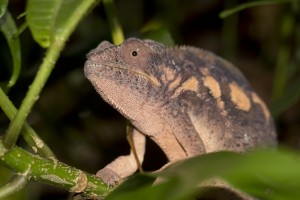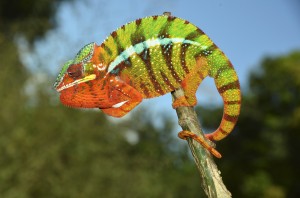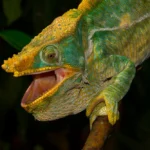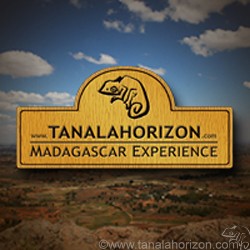
Distribution of the local form Nosy Mitsio:
Nosy Mitsio is not a single island, but a group of islands of volcanic origin on Madagascar’s northwest coast. The archipelago is part of Antsiranana region and is located about 40 km offshore in the Channel of Mozambique, surrounded by a coral reef. The largest island is Grande Mitsio, among the smaller islands, are Nosy Ankarea and Nosy Hely. The whole archipelago has a length of about 70 km and is famous for its paradisiac landscape with white sand beaches, turquoise blue sea, and coconut palms. By boat, you need about two hours to drive there.
On Grande Mitsio, there is mainly secondary vegetation beside the characteristic basalt rocks. The island is relatively few visited, and the largest village, Ambaramidada, has accordingly hardly any infrastructure. People here live very simple and subsist on fishing or zebus. The smaller islands, also Nosy Ankarea, are majoritarian unoccupied and thus have remained quite originally. Only one exceptionally beautiful island called Tsarabanjina is captured by a luxury hotel of the same name, that also owns the island nowadays.
In captivity, this local form has been sold for some years, under both names Nosy Mitsio as well as Nosy Ankarea. De facto, Grande Mitsio prohibits catching and exporting chameleons there up to date, after somewhere exported a few years ago without asking the inhabitants of the island. Instead, panther chameleons are taken from Nosy Ankarea, but exported under both names. Unfortunately, this causes confusion among chameleon keepers. There are already a lot of animals in captivity that have been bought under the “wrong” name yet.
Aussehen der Lokalform:
Male panther chameleons of this local form are bright green (without any banding) with white lateral stripe and red eyelids. When meeting another male, they become yellow like a lemon. Although naturally isolated from each other, the panther chameleons of Mitsio archipelago look very similar to each other. We have only seen a little more orange color in individuals from Nosy Ankarea.
| Jan | Feb | Mar | Apr | May | Jun | Jul | Aug | Sep | Oct | Nov | Dec | |
| Average temperature | ||||||||||||
| Minimum temperature | ||||||||||||
| Maximum temperature | 31 | 31 | 32 | 31 | 31 | 30 | 29 | 29 | 30 | 31 | 32 | 32 |
| Rain days | 14 | 13 | 12 | 8 | 5 | 5 | 7 | 8 | 5 | 7 | 6 | 12 |
We have collected the data given above over several years with thermometers and hygrometers at the finding places of the chameleons. "Average temperature" means that values of a whole month have been calculated to one average value per month. For example all measured minimum temperature values of February have been calculated to one average minimum temperature for February. In plain language, this means single peak values of a day may be a little higher or lower than the average minimum and maximum temperatures. It is possible that a location has an average maximum temperature of 29°C, but one day during that month it had 33°C or even 35°C there.
Information follows soon!
Habitat:
More info will follow as soon as we have been to one of the islands again.














